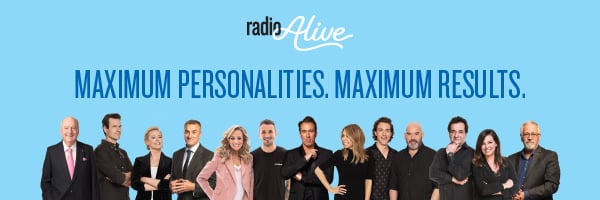Comment from Peter Saxon
Back in 2012, Kyle Sandilands and Alan Jones were battling it out to see who could rack up the most complaints with the ACMA.
If memory serves me right, Kyle was winning at that stage having troubled the watchdog to investigate a string of on-air incidents including the daughter who confessed to her mother to being raped at 12; the “spider” baby born with six legs (for which he was exonerated) and the “fat slag” incident when he abused a News Corp journalist for criticising his debut on the Seven Network of “Kyle and Jackie O’s Night with the Stars” which was, by any measure, an unmitigated failure. The show started after The X Factor with an audience of 1.6 million and finished an hour and half later with just 200,000.
That last incident earned 2Day a “licence condition” which meant that any similar incident over the next five years could have its broadcast licence suspended or revoked.
Despite all that, the listeners remained loyal to 2Day which dominated the FM band on the back of Kyle and Jackie O’s #1 position in Breakfast. However, there was a an advertiser backlash – nothing like the one 2GB is experiencing today – but one that SCA took seriously, nonrtheless.
In an interview with ARN’s content supremo, Duncan Campbell, who at the time, was struggling with the old Mix 106.5FM in the same way as 2Day is struggling now, I asked him a few questions about his then opposition.
radioinfo: Is controversy a legitimate programming tool? If you were running a different kind of network, attracting a different kind of listener, would you use it? Are there limits? If so, what are they?
Campbell: One of the biggest challenges today in radio is to get noticed by the audience and, depending on your format and your target audience, you have a number of tactics and strategies you can deploy. And creating controversy, as you say, is just one of those tactics.
I’ve got no issue with it at all, to be honest. It’s not appropriate for the ARN formats but at the end of the day people don’t have to listen.
In terms of limits, I think as long as that level of controversy does not incite hatred or violence then there are very few limits. As I said every radio has an off button. The other side of the coin is censorship and we know from history where that can lead.
radioinfo: Here’s a hypothetical: Let’s imagine for a minute that Jonesy and Amanda had a TV show which flopped and Jonesy let fly at a journo who’d panned it, resulting in a public outcry … how would you have handled that situation?
Campbell: I don’t really want to comment on the Kyle situation, which is what you’re alluding to in your question. I don’t know enough about what his parameters are or how he’s managed.
I worked with him at 96FM in Perth many years ago, and I do know he’s a smart guy with a real radio head on his shoulders. My personal view on the incident you highlight is, that given the strength of the show, there is no way Austereo was ever going to remove him.
No doubt Duncan Campbell has never been happier to have been proved so wrong. In truth, Kyle and Jack weren’t sacked, they just couldn’t come to terms on a new contract, so they explored other options and ARN offered them a better deal.
A content consultant also commented at the time: If you got rid of Kyle, another one would pop up in his place. If SCA didn’t replace him with a clone, then some other clever content director at another station will identify the gap in the market and hire Kyle or a Kyle equivalent at their station.
Fast forward to 2019 and last week’s survey result. Kyle & Jackie O are still #1 with an 11.0 share in Breakfast but are now on ARN’s KIIS 106.5, rebadged from “Mix” in 2014. Meanwhile, 2DayFM, having spent more than five years trying out as many Breakfast shows in effort replace their erstwhile rainmakers, posted a meagre 2.4, beating only Macquarie Sports 954 and Sky Sports Radio in a 15 station market.
Other than that, not a lot has changed as far as listeners are concerned. They remain loyal to their favourite presenters, apparently regardless of what they might say that others find offensive. Advertiser and sponsors, though, as I observed on radioinfo last week, are another matter. The fallout from Alan Jones intemperate comments about NZ PM Jacinda Ardern, have resulted in an unprecedented number of cancellations, which, according to the Sleeping Giants Oz website stands at 88 clients.
Given this new paradigm, I spoke to Duncan Campbell to see if his opinions about controversial presenters had changed since Kyle & Jackie O had come on board five years ago.
“It’s a commercial business,” says Mr Campbell. “Kyle and Jackie still push the envelope but the envelope changes as the eras change as well. What was acceptable back eight or 10 years ago is not necessarily acceptable now.
“You have to draw the distinction between the advertising market and the audience. I mean. There are two different tolerance thresholds. Advertisers today are very much after brands that are safe – not so they’re sterile but it’s safe to advertise on. There’s obviously a tolerance level there and Alan overreached that tolerance level and therefore you’re seeing the advertising exodus that we’re seeing at the moment.
“Also, you have to factor in the influence that certain lobby groups apply to the advertising market as well. These groups have become quite powerful now through social media. So, you have to operate within that environment. No one’s that powerful that they can control the environment. The laws of nature apply as much to the radio market and advertising market as they do to the real world.”
Controversial presenters (some call the shock jocks) have generally been successful for the radio stations that employ them because they generate headlines that can attract listeners and can fire up an audience in a way that few can.
But as I said last week, there’s no point having a large group of loyal listeners if advertisers stop paying to reach them.
For today’s aspiring “shock jock” figuring out what’s acceptable for your listeners and advertisers, I guess, is a bit like playing tennis. Consistently get the ball just in or on the line, you’ll be rich and famous. Miss the line by a millimetre or more too often, you’ll go broke. Except that, in tennis, unlike social trends, the lines stay put, they’re not blurred and the net remains at regulation height.
Even in tennis, though, controversy has its place. Who do you think would win a match between Nick Kyrgios and a young John McEnroe ? The one with the biggest mouth or the one that gets the ball on the line the most?

Peter Saxon


